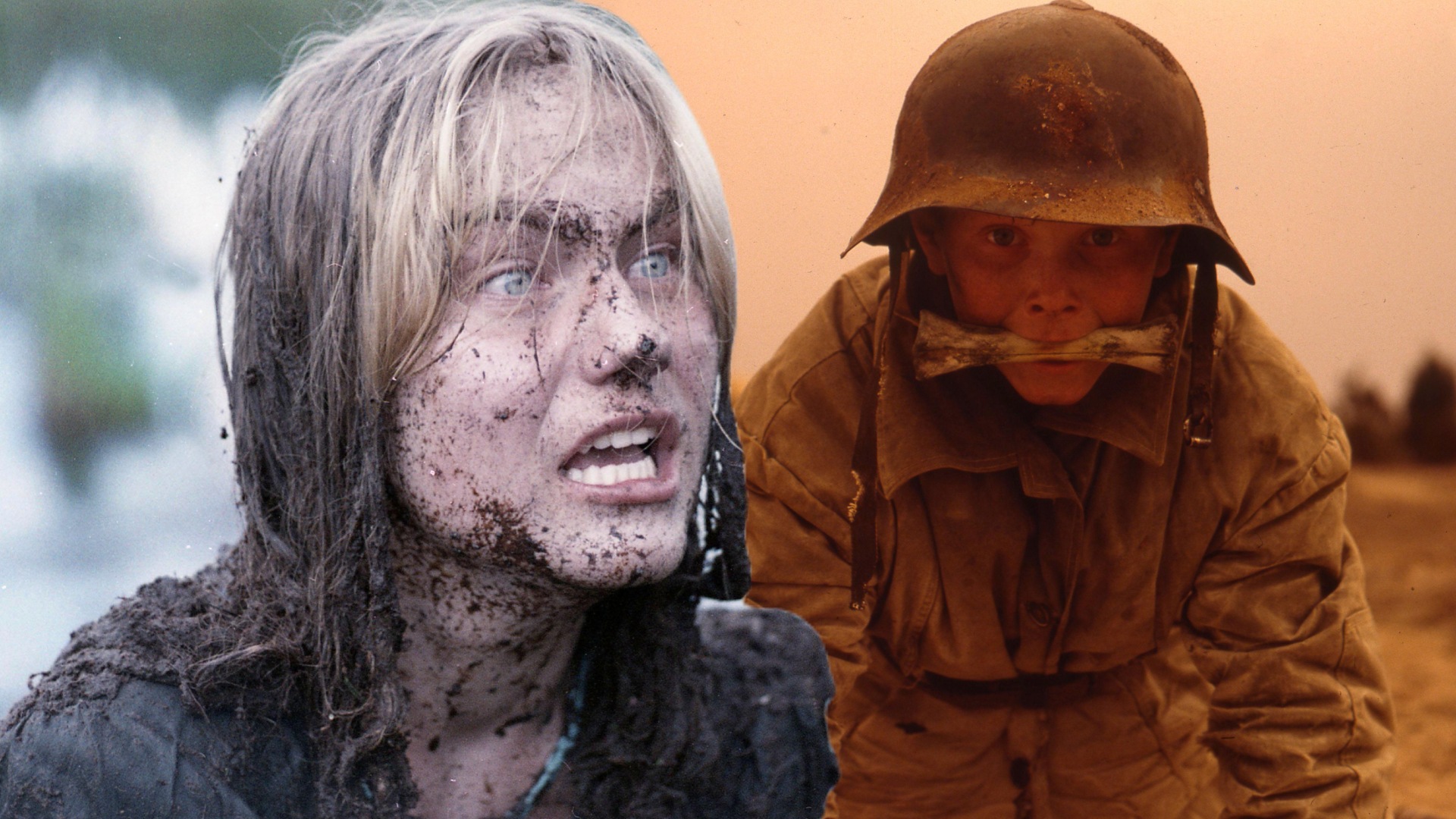


In the realm of entertainment, there are three distinct genres that often captivate audiences: cheesy horror, war movies, and disaster movies. These genres may seem unrelated at first glance, but upon closer examination, they share a common theme - absurdity.
Cheesy horror comedies, such as 'Cursed Friends' and 'Totally Killer', embrace the absurdity of their narratives and characters. 'Cursed Friends' follows four friends who reunite on Halloween when a curse brings their 2002 wishes to life. While the film incorporates horror elements, its primary focus is on comedy and nostalgia. The intentionally silly dialogue and exaggerated effects contribute to the overall cheesiness of the film. Similarly, 'Totally Killer' takes a time travel twist on the slasher genre, capturing the exaggerated tone of the '80s. The film's big hair, big colors, and bigger personalities add to its cheesy appeal. However, the messy and confusing plot structure detracts from its potential enjoyment.
War movies, on the other hand, explore the absurdity of war itself. Films like 'The Battle of Algiers,' 'Apocalypse Now,' and 'Dr. Strangelove' delve into the dark and chaotic nature of war, highlighting the absurdity and futility of the conflicts. These movies use powerful storytelling and visuals to convey the realities of war and promote anti-war sentiments. They explore different themes, including romance, political commentary, and the horrors of war, using various genres to engage viewers. [b9d41123]
Through the lens of absurdity, these films provide unique perspectives on different aspects of human experience. Whether it's the nostalgic and funny moments of cheesy horror or the examination of war's absurdity, the common theme of absurdity unites them all. These stories challenge our perceptions, entertain us, and ultimately invite us to reflect on the peculiarities of life.
In addition to cheesy horror and war movies, there is another genre that embraces absurdity - disaster movies. These films often feature implausible setups and silly plot twists, making them prime examples of cinematic cheesiness. Yardbarker recently published an article titled 'The 20 Cheesiest Disaster Movies of All Time,' which explores the appeal of these movies despite their over-the-top nature. [b9d41123]
The article lists and discusses 20 of the cheesiest disaster movies, including '2012,' 'The Swarm,' 'Zero Hour!,' 'The Cassandra Crossing,' 'San Andreas,' 'Volcano,' 'Airport 1975,' 'Avalanche,' 'The Happening,' 'Daylight,' 'Flood!,' 'Meteor,' 'Cyclone,' 'When Time Ran Out...,' 'The Core,' 'The Concorde ... Airport '79,' 'Beyond the Poseidon Adventure,' 'Rollercoaster,' 'Into the Storm,' and 'Pompeii.' It provides brief descriptions and highlights of each movie, including notable scenes and cast members. [b9d41123]
While cheesy disaster movies may not have the same intention of exploring the absurdity of war or providing nostalgic comedy, they still offer a unique form of entertainment. These movies often rely on exaggerated special effects, larger-than-life scenarios, and sometimes questionable acting to create an enjoyable and entertaining experience for viewers. Despite their flaws and cheesiness, these films have managed to capture the attention and fascination of audiences throughout the years.
Yorgos Lanthimos is a Greek filmmaker known for his unique and unsettling films. Born in Athens, Greece in 1973, Lanthimos studied film in his hometown and gained critical acclaim with his early film "Dogtooth" (2009). He continued to explore surreal themes in subsequent films such as "Alps" (2011) and "The Lobster" (2015). His film "The Favourite" (2018) received multiple awards and an Academy Award nomination for Best Director. Lanthimos' style is characterized by deadpan performances, absurd situations, and unconventional narratives. He challenges traditional cinematic norms and embraces surrealism, pushing boundaries in modern cinema. [6989a404]
No Film School recently published an article titled '10 Directing Lessons Inspired by Yorgos Lanthimos,' which explores the valuable lessons aspiring filmmakers can learn from Lanthimos's filmography. The article highlights ten directing lessons inspired by Yorgos Lanthimos:
1. The Power of the Premise - Lanthimos's films rest on audacious premises that dissect social norms.
2. Embrace Discomfort - Lanthimos creates psychological disquietude through lingering scenes and unnerving dialogue.
3. The Unsettling Power of the Mundane - Lanthimos juxtaposes bizarre situations with familiar settings to amplify the unsettling.
4. Dialogue as Weapon - Lanthimos's characters speak in formal, stilted, and emotionally distant ways, turning communication into a power struggle.
5. Visual Composition as Storytelling - Lanthimos uses wide shots, symmetry, and a clinical color palette to convey meaning and highlight powerlessness.
6. Deadpan Humor - Dark, absurd humor adds a twisted form of comedy to Lanthimos's films.
7. Sound as Atmosphere - Lanthimos uses sound design to build tension and amplify unease.
8. Collaboration with Actors - Lanthimos encourages risk-taking in delivery, resulting in vulnerable and alienating performances.
9. The Shock of Violence - Violence in Lanthimos's films is depicted clinically, amplifying helplessness and exposing the cruelty of society.
10. Ambiguity as Invitation - Lanthimos's films end with ambiguity, forcing the audience to grapple with the themes and ideas presented. [b18a00c2]
Yorgos Lanthimos's unique style offers valuable lessons for aspiring filmmakers in embracing boldness and trusting the audience.
In conclusion, the power of cinematic absurdity extends beyond just cheesy horror and war movies. It also encompasses the realm of disaster movies and the directing lessons from Yorgos Lanthimos. Whether it's the intentional cheesiness of horror comedies, the examination of war's absurdity, or the over-the-top nature of disaster movies, these films challenge our perceptions, entertain us, and invite us to reflect on the peculiarities of life.